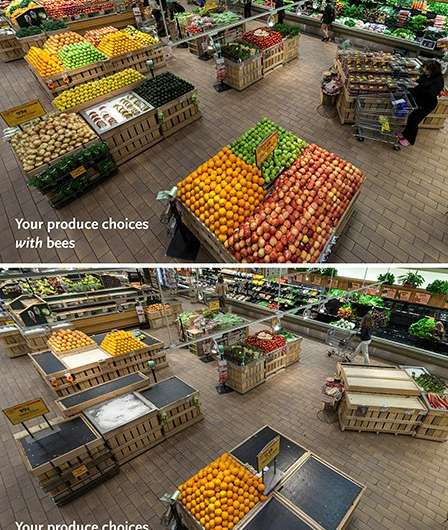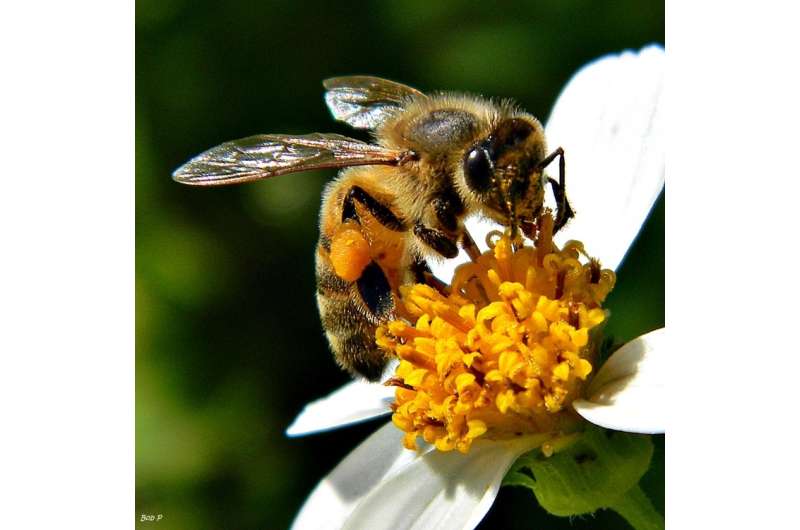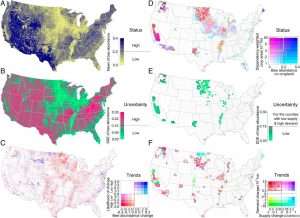How are pollinators faring with Anthropogenic change?

Pollinators provide irreplaceable ecosystem services. One out of every three bites of food are attributable to pollination. Pollinators bring us many of our favorite fruits and vegetables (see this list of crops that use bee pollination), and without them, our diets would be a lot less colorful (see picture below). But pollinators are declining at unprecedented rates. Anthropogenic effects, such as introduction of exotic species and habitat loss, are considered main drivers of worldwide pollinator decline. The theme of ESA 2016 was "novel ecosystems in the Anthropocene," and the effects of anthropogenic changes on pollinators were center stage.
The introduction of exotic species have profound effects on pollinators. Angelita Ashbacher, from UC Santa Cruz, used the Randall Morgan Insect Collection to investigate how pollinator-plant interactions have changed over the past few decades. She found that the interactions between native pollinators and plants have shifted, likely due to anthropogenic effects such as climate change and introduction of exotic species. Exotic species are now heavily integrated into local pollination networks, and many native species have completely disappeared.
Honey bees, an exotic species in North America, have come under fire for their effects on native pollinators. Our agricultural system currently depends heavily on the use of managed honey bees (Apis mellifera) for pollination services. However, there are concerns about how their use may be effecting native species. John F Maleady, from Governors State University, found that presence of honey bees may cause a significant decrease in available nectar, an important resource for native bees. The introduction of exotic bees could also be assisting the spread of invasive plants. Midzuho Tatsuno, from Kyoto University, found that exotic honey bees (A. mellifera) show a strong preference for exotic flowering plants in Japan (the published results of that study can be found here). Other exotic pollinators, such as the European wool-carder bee (Anthidium manicatum) may also directly affect native pollinators. Kelsey K Graham, from Tufts University (also the author), found that male wool-carder bees actively defend patches of flowers, keeping other pollinators away. This decrease in flower availability is particularly concerning as native pollinators are already facing large scale habitat loss.

Land use change resulting in habitat loss is widely considered the main cause of wild pollinator decline. For instance, huge areas of land have been converted for use in agriculture. Mono-cultures have replaced habitats that previously supported large communities of pollinators with a diverse array of wildflowers. Even when crops do provide nectar or pollen for pollinators, many are treated with pesticides that have been associated with bee decline. Loss in bee habitat due to agricultural intensification was particularly well illustrated in the Koh et al (2016) study which modeled wild bee abundance in the United States. Yellow areas on the map (indicating low bee abundance) are widespread across the breadbasket of the US.
However, whereas the negative effects of agricultural intensification on bees is largely supported, the effects of another aspect of land use change, urbanization, are less clear. Gerardo Camilo's (Saint Louis University) research found that urban areas can provide habitat for a diverse array of wild bees. Camilo and his research team sampled bees within the urban core of St. Louis, finding 111 species. Only 17 additional species were discovered when sampling was expanded to include the less urbanized St. Louis metro area. Camilo credits presence of urban farms for supporting such a diverse array of pollinators. However, Paul Glaum, from the University of Michigan, found that increased levels of urbanization negatively affected bumble bee (Bombus spp.) abundance and diversity. Glaum's research provides evidence that ground nesting bees, such as bumble bees, are facing a nesting habitat shortage in heavily built up areas.

In conclusion, evidence is mounting that bee communities around the world are seeing declines in both diversity and abundance, and that human activity is a primary contributor. But it's not all bad news. Some species are thriving in the human modified landscape. And there are things we can do to help slow or stop the decline of other species. Pollinator researchers at ESA 2016 largely ended on a hopeful note. By spreading awareness of pollinator importance, and continued support of pollinator research and extension programs, we can help keep these important and charismatic members of our global community.
Provided by Public Library of Science
This story is republished courtesy of PLOS Blogs: blogs.plos.org.



















